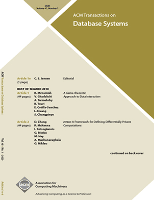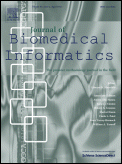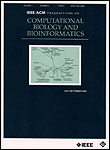
Database-The Journal of Biological Databases and Curation
Scope & Guideline
Unlocking the Potential of Biological Databases
Introduction
Aims and Scopes
- Biological Data Curation:
The journal emphasizes the importance of curating biological data to ensure accuracy, reliability, and accessibility. This includes manual and automated curation processes to enrich databases with validated information. - Integration of Multi-Omics Data:
A core area of focus is the integration of various omics data (genomics, proteomics, metabolomics) to provide comprehensive insights into biological systems and disease mechanisms. - Development of Computational Tools and Databases:
The journal highlights the development of new computational tools, platforms, and databases that facilitate the analysis and interpretation of biological data, including web-based resources and interactive applications. - Machine Learning and AI Applications:
Research often involves applying machine learning and artificial intelligence techniques for data extraction, classification, and prediction in biological contexts. - Knowledge Graphs and Ontologies:
The use of knowledge graphs and ontologies for organizing biological information and enhancing data interoperability is a significant theme, reflecting the journal's commitment to improving data usability.
Trending and Emerging
- Artificial Intelligence and Machine Learning:
Recent publications show a surge in the application of AI and machine learning techniques for tasks such as data extraction, classification, and predictive modeling, highlighting the increasing reliance on computational methods in biological research. - Precision Medicine and Personalized Genomics:
There is an emerging trend towards databases and tools that support precision medicine initiatives, focusing on personalized genomic data and its implications for disease treatment and prevention. - Interactive and Dynamic Databases:
A growing number of studies are focusing on the development of interactive databases that allow users to engage with data dynamically, facilitating better exploration and analysis of biological information. - Integration of Environmental and Microbiome Data:
The intersection of microbiome research and environmental data is gaining traction, reflecting a broader interest in understanding the complex interactions between organisms and their environments. - Collaborative and Community-Driven Databases:
There is an increasing emphasis on the development of collaborative databases that leverage community contributions for curation and annotation, promoting open science and data sharing.
Declining or Waning
- Traditional Database Models:
There has been a noticeable decrease in papers focusing on traditional relational database models, as newer architectures and NoSQL databases gain preference for handling complex biological data. - Basic Data Annotation Techniques:
Papers centered on basic data annotation techniques without the integration of advanced computational methods or AI are becoming less prominent, as the field moves towards more sophisticated approaches. - Generalized Biological Databases:
The publication of generalized biological databases that do not target specific diseases or biological questions appears to be declining, as researchers increasingly focus on niche databases that cater to specialized areas. - Static Data Repositories:
There is a waning interest in static data repositories that lack dynamic features or user interactivity, with a shift towards more engaging and interactive platforms that facilitate user involvement and data exploration.
Similar Journals

ACM TRANSACTIONS ON DATABASE SYSTEMS
Elevating Standards in Database TechnologyACM Transactions on Database Systems (ISSN: 0362-5915, E-ISSN: 1557-4644) is a premier journal published by the Association for Computing Machinery, dedicated to advancing the field of database systems. Established in 1976, this influential journal has cultivated a reputation for rigorous research, earning a prestigious Q1 ranking in Information Systems as of 2023. With its strong impact factor and notable Scopus ranking (133 out of 394 in Computer Science), it stands as a vital resource for academics, professionals, and students alike seeking to explore the intricacies of database technology, design, and applications. While the journal follows a subscription model, it remains committed to disseminating key developments and fostering knowledge in the rapidly evolving domain of information systems. With contributions from leading experts in the field, ACM Transactions on Database Systems is essential reading for anyone dedicated to the study and practice of database engineering and management.

WORLD WIDE WEB-INTERNET AND WEB INFORMATION SYSTEMS
Advancing Knowledge in Internet and Information SystemsWORLD WIDE WEB - INTERNET AND WEB INFORMATION SYSTEMS, published by Springer, is a leading academic journal that focuses on the cutting-edge areas of Internet technologies and web-based information systems. With an esteemed ISSN of 1386-145X and an E-ISSN of 1573-1413, this journal has been a significant contributor to the fields of Computer Networks and Communications, Hardware and Architecture, and Software since its inception in 1998. The journal consistently ranks in the Q1 category across these fields, reflecting its high impact and relevance, evidenced by its impressive Scopus rankings where it stands in the upper percentiles (79th for Computer Networks and Communications, 77th for Hardware and Architecture, and 75th for Software). Researchers, professionals, and students looking to stay at the forefront of web information systems will find a wealth of valuable resources and innovative research compellingly presented in this journal, available for publication until 2024.

Journal of Integrative Bioinformatics
Pioneering Open Access to Transformative Bioinformatics KnowledgeJournal of Integrative Bioinformatics, published by WALTER DE GRUYTER GMBH, is a leading open-access journal that has been at the forefront of the field since its inception in 2004. With an E-ISSN of 1613-4516, it serves as a crucial platform for researchers engaged in the interdisciplinary study of bioinformatics, blending insights from biology, computer science, and mathematics. Based in Germany, the journal is recognized for its impact in the realm of general medicine, boasting a Scopus rank of #172 out of 636 and placing in the 73rd percentile of its category. The journal continuously strives to disseminate high-quality research contributions that unify experimental and computational approaches to address complex biomedical questions. Targeted towards academics, professionals, and students alike, the Journal of Integrative Bioinformatics provides essential access to innovative research that enhances our understanding of integrative methodologies in medicine and beyond, especially with converged years spanning from 2008 to 2024.

JOURNAL OF BIOMEDICAL INFORMATICS
Exploring the intersection of computer science and healthcare.JOURNAL OF BIOMEDICAL INFORMATICS, published by Academic Press Inc. Elsevier Science, is a premier peer-reviewed journal dedicated to the integration of computer science and health informatics to advance the field of biomedical engineering and healthcare. With its ISSN 1532-0464 and E-ISSN 1532-0480, this influential journal has established itself with an impressive impact factor, reflecting its high-quality research contributions. Recognized within the top quartile (Q1) of both Computer Science Applications and Health Informatics for 2023, the journal ranks #135 out of 817 in Computer Science Applications and #25 out of 138 in Health Informatics according to Scopus metrics. Offering open access options, it fosters extensive dissemination and accessibility of groundbreaking research findings to the scientific community. As a scholarly platform from 2001 to 2024, it is engineered to cater to the educational needs of researchers, professionals, and students, promoting innovative studies that bridge the gap between technology and healthcare.

DISTRIBUTED AND PARALLEL DATABASES
Pioneering Research in Distributed Database SolutionsDistributed and Parallel Databases is a prestigious journal published by Springer, dedicated to advancing the field of database systems and distributed computing. With an ISSN of 0926-8782 and an E-ISSN of 1573-7578, this journal has been a prominent platform for disseminating significant research findings since its inception in 1993. The journal is recognized for its contributions across various dimensions of database technology, notably reflecting in its 2023 Quartile Rankings where it stands at Q3 in Hardware and Architecture and Software, while achieving a commendable Q2 in Information Systems and Management. With Scopus Ranking positioning it within the top half of key categories, the journal plays a crucial role in bridging theoretical and practical aspects of distributed database solutions. Although it does not currently offer open access options, it is widely accessible to institutions, making it an essential resource for researchers, professionals, and students keen on exploring the latest trends and innovations in the realm of distributed and parallel computing.

Proteome Science
Exploring the Depths of Proteomic ResearchProteome Science is an esteemed academic journal specializing in the field of proteomics, providing a platform for advanced research and discussions surrounding the structure, function, and dynamics of proteins in biological systems. Published by BMC, a reputable publisher recognized for its commitment to open-access publishing, Proteome Science has been disseminating pivotal research findings since its inception in 2003. Targeted towards researchers, professionals, and students in biochemistry and molecular biology, the journal aims to foster collaboration and innovation within the scientific community. While it currently holds a Q3 quartile ranking in both Biochemistry and Molecular Biology categories, its impactful contributions to the field are reflected in its accessibility, as evidenced by its open access policy. By embracing collaborative research methodologies and providing a platform for novel findings, Proteome Science plays a crucial role in advancing the understanding of proteomic analyses, catering to a global audience that values groundbreaking scientific discovery.

BRIEFINGS IN BIOINFORMATICS
Unveiling the Future of Life Sciences Through DataBRIEFINGS IN BIOINFORMATICS is a premier academic journal dedicated to the dynamic field of bioinformatics, published by Oxford University Press. With a prestigious standing reflected in its Q1 quartile rankings in both Information Systems and Molecular Biology, this journal serves as an essential resource for researchers, professionals, and students eager to explore the intersection of biology and computational sciences. The journal not only publishes high-impact research articles but also reviews and critical commentaries that push the boundaries of understanding in bioinformatics. As it converges its objectives towards fostering innovation and knowledge dissemination from 2000 to 2024, BRIEFINGS IN BIOINFORMATICS offers rich insights that remain pivotal to advancements in genomic studies, data integration, and computational tools. Its ranking in the top percentiles of Scopus—30th among 394 in Computer Science and 44th among 410 in Molecular Biology—underscores the journal's influential presence in the academic community. Engaging with the latest research and trends, this journal is integral for anyone invested in the future of life sciences and data analytics.

PLoS Computational Biology
Driving Innovation in Cellular and Molecular NeurosciencePLoS Computational Biology is a premier open-access journal published by the Public Library of Science, committed to advancing the understanding of complex biological data through computational approaches. Since its inception in 2005, the journal has made significant strides in the fields of Cellular and Molecular Neuroscience, Computational Theory and Mathematics, Ecology, Genetics, and Molecular Biology, achieving a notable Q1 ranking in various categories as of 2023. With an exceptional impact factor and an esteemed ranking—such as Rank #23/176 in Computational Theory and Mathematics—PLoS Computational Biology provides a vital platform for researchers, professionals, and students to disseminate their cutting-edge findings and insights. The journal's open-access model ensures that high-quality research is freely accessible worldwide, fostering collaboration and innovation across disciplines. Located in San Francisco, CA, it serves as a hub for the global scientific community, making it an indispensable resource for anyone at the forefront of computational biology and its diverse applications.

IEEE-ACM Transactions on Computational Biology and Bioinformatics
Transforming Biological Insights with Computational ExcellenceIEEE-ACM Transactions on Computational Biology and Bioinformatics is a prestigious journal published by the IEEE Computer Society, focusing on the interdisciplinary field of computational biology and bioinformatics. Established in 2004, this journal has made significant strides in contributing to our understanding of complex biological systems through quantitative methods and computational techniques, and it spans a converged publication period through 2024. As a notable resource with an impact factor that positions it in the second quartile in the domains of Applied Mathematics, Biotechnology, and Genetics, it serves as an essential platform for researchers and professionals seeking to disseminate their findings to a global audience. The journal ranks impressively in Scopus, with Applied Mathematics holding a rank of #38 out of 635 (94th percentile) and Genetics at #86 out of 347 (75th percentile), highlighting its significant influence in the scientific community. While the journal is not open-access, it provides valuable insights and cutting-edge research that are crucial for advancing the fields of bioinformatics and computational biology, making it indispensable for students, researchers, and practitioners alike.

Chem-Bio Informatics Journal
Unlocking Potential Through Innovative Research and CollaborationChem-Bio Informatics Journal is a dedicated platform for the dissemination of innovative research in the intersecting realms of biochemistry and computational science. Published by the CHEM-BIO INFORMATICS SOC in Japan, this journal embraces the rapidly evolving field of chemoinformatics and bioinformatics, fostering scholarly communication among researchers, professionals, and students alike. With its ISSN: 1347-6297 and E-ISSN: 1347-0442, the journal continues to enrich the scientific community by offering insights into novel methodologies and applications that bridge chemistry and biology. Although currently positioned in the fourth quartile in the biochemistry category according to Scopus rankings, contributing to this journal provides an invaluable opportunity for authors to showcase impactful findings that could resonate within the field. The journal is particularly committed to supporting interdisciplinary research that addresses complex biological problems through computational modeling and data analysis. By publishing high-quality and peer-reviewed articles, Chem-Bio Informatics Journal aims to enhance the scientific discourse and is poised to become a pivotal resource for advancing the frontiers of biochemistry and molecular biology.